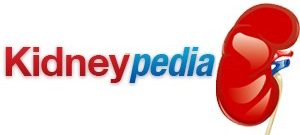Renal colic is a moderate to severe form of abdominal pain usually attributed to kidney stones. The pain begins in the abdomen and circulates to the groin. It may be a dull pain or a sharp, acute pain; the acute form is described as one of the most intense pain sensations a human being is capable of experiencing –
Causes
Renal colic is a symptom of kidney stones, but kidney stones themselves may have multiple causes. Among the possible causes of this disorder are urinary tract infection, any of various diseases of the small intestine, inflammatory bowel diseases, gout, excess calcium or uric acid in the urine, and complications to surgery or to chemotherapy. Underlying many of these conditions are dietary factors including a diet high in meat and other protein-
Treatment
Kidney stones can occur without overt symptoms, but when accompanied by renal colic, treatment of some kind is always indicated. At minimum, treatment for the pain itself using acetaminophen or, for more severe pain, opioids is used while letting the stone pass naturally.
In more severe cases, pain medication is accompanied by rehydration therapy using intravenous hydration, pulsed ultrasound treatment to shatter the kidney stones and allow them to pass, or surgical intervention including drainage with a stent.
The size and chemical composition of the kidney stone are both important in determining what approach should be taken. Small kidney stones less than 4 mm in diameter have an 80% chance of passing naturally without intervention; such stones require only monitoring and pain treatment. With stones larger than 8 mm in diameter, however, the chance of natural passage drops to 20%.
Surgical treatment to break up kidney stones depends on the size of the stone. Smaller stones that refuse to pass naturally can often be broken up into smaller stones through lithotripsy, the use of pulsed ultrasound vibrations. This treatment is non-
Very large stones may require surgical removal by ureteroscopy, a minimally-
Hospitalization may be required in very severe cases. This is indicated if oral analgesics prove inadequate to manage the pain, if complete
urethral blockage occurs when the patient has either a single kidney or a transplanted kidney, or when complications exist such as urinary tract infection, inability to urinate, or severe dehydration. Bacterial infections accompanying kidney stones should be treated with antibiotics.
There are also medications that are useful in treating kidney stones themselves. These include alpha-
reduce systine levels in urine, diuretics, potassium citrate or sodium bicarbonate to regulate urine pH levels, and allopurinol (a treatment for uric acid kidney stones).
In addition to medical treatments, lifestyle changes may be indicated to reduce the chance of recurrence. Reduced intake of protein, reduction or elimination of alcohol, increased water consumption, and reduced calcium consumption may all be prescribed.
